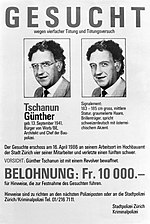Urania Sternwarte
Astronomical observatories in SwitzerlandBuildings and structures in ZürichCultural property of national significance in the canton of ZürichPublic observatoriesTourist attractions in Zürich

Urania Sternwarte is a public observatory in the Lindenhof quarter of Zürich, Switzerland. Its name Urania refers to the muse of astronomy in Greek mythology.
Excerpt from the Wikipedia article Urania Sternwarte (License: CC BY-SA 3.0, Authors, Images).Urania Sternwarte
Uraniastrasse, Zurich Altstadt
Geographical coordinates (GPS) Address Nearby Places Show on map
Geographical coordinates (GPS)
| Latitude | Longitude |
|---|---|
| N 47.3744 ° | E 8.5395 ° |
Address
Uraniastrasse 9
8001 Zurich, Altstadt
Zurich, Switzerland
Open on Google Maps








